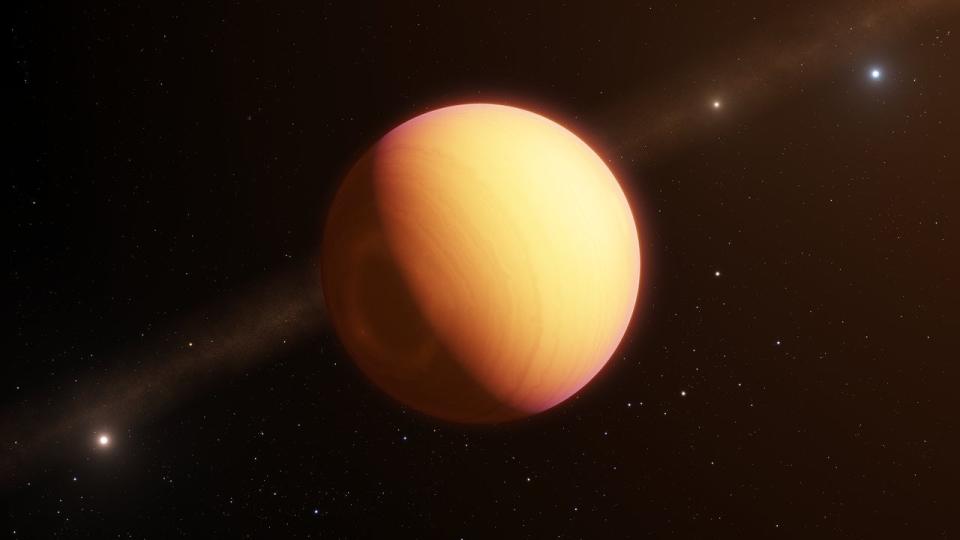Most-detailed ever look at planet outside our solar system reveals a truly hellish world

Scientists have peered into the atmosphere of a planet outside our solar system, seeing a boiling planet-wide storm with clouds of iron, wreathed in choking carbon monoxide.
It’s our most-detailed ever look at an alien ‘exoplanet’, and reveals a truly hellish world, with temperatures of up to 1,000°C.
Researchers used ‘optical interferometry’ to image the exoplanet HR 8799e, which orbits a young star about 129 light-years from Earth in the constellation of Pegasus.
HR 8799e is a ‘super-Jupiter’, a world unlike any found in our solar system, that is both more massive and much younger than any planet orbiting the Sun.
Read more from Yahoo News UK:
Harry Potter book with title misspelling sells for nearly £70k
Facebook to ban white nationalist hate speech
Man who claimed child sex doll was for an ‘art project’ jailed
At only 30 million years old, this baby exoplanet is young enough to give scientists a window onto the formation of planets and planetary systems.
The exoplanet is thoroughly inhospitable – leftover energy from its formation and a powerful greenhouse effect heat HR 8799e to a hostile temperature of roughly 1,000°C, the researchers say.
‘Our analysis showed that HR 8799e has an atmosphere containing far more carbon monoxide than methane – something not expected from equilibrium chemistry,’ explains team leader Sylvestre Lacour researcher CNRS at the Observatoire de Paris.
‘We can best explain this surprising result with high vertical winds within the atmosphere preventing the carbon monoxide from reacting with hydrogen to form methane.’
The team found that the atmosphere also contains clouds of iron and silicate dust. When combined with the excess of carbon monoxide, this suggests that HR 8799e’s atmosphere is engaged in an enormous and violent storm.
‘Our observations suggest a ball of gas illuminated from the interior, with rays of warm light swirling through stormy patches of dark clouds,’ says Lacour.
‘Convection moves around the clouds of silicate and iron particles, which disaggregate and rain down into the interior. This paints a picture of a dynamic atmosphere of a giant exoplanet at birth, undergoing complex physical and chemical processes.’


